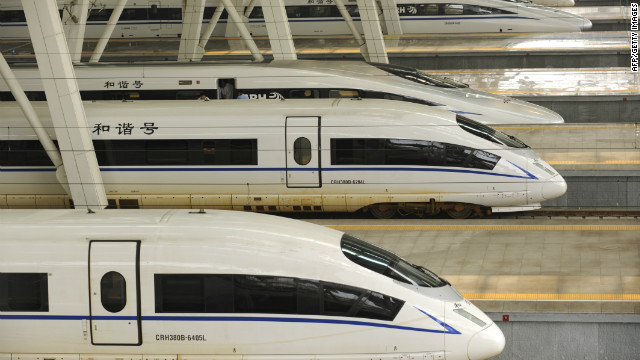Saturday, September 8, 2012
China has approved plans for Rmb1tn ($158bn) in infrastructure spending
(Financial Times) -- China has approved plans for Rmb1tn ($158bn) in infrastructure spending, an investment push that analysts say will help support growth in the stuttering economy.
The money will be rolled out over several years and the government has not described the investments as a stimulus package, but the announcements nevertheless fuelled renewed optimism about China's prospects.
The domestic stock market surged more than 4 per cent in early trading on Friday, reflecting the hope of investors that China could be on the verge of turning the corner after two years of consistently slower growth.
"With clear signs of a worsening slowdown of economic growth, China's central government finally took real actions," said Lu Ting, an economist with Bank of America Merrill Lynch.
?
China's growth fell to 7.6 per cent in the second quarter, its lowest in three years, and data in recent months has pointed to an even steeper slowdown this quarter. Economic indicators for August, to be published over the weekend, are expected to show sluggish industrial output.
Analysts had long predicted that the government would intervene with more fiscal spending and monetary easing to cushion the slowdown, but the nation's top leaders have been very cautious and have only made mild moves so far.
Fear of overstimulating the economy, as happened in 2009, has been one major constraint. Officials also appear to have been preoccupied with politics as a once-in-a-decade leadership transition is set to take place later this year.
In the announcements over the past two days, the National Development and Reform Commission, a top central planning agency, has approved 25 urban rail projects, 13 highway construction projects, seven waterway projects and nine waste water treatment plants. The total cost of the projects is estimated to be about Rmb1tn, or 2 per cent of gross domestic product.
"We believe implementation of these projects will begin in the coming months, which will cause fixed asset investment growth to rise. The impact should start to be reflected in GDP numbers in the fourth quarter of 2012," said Zhang Zhiwei, an economist with Nomura Securities.
Projects spearheaded by the NDRC are seen by analysts as much more credible spending commitments than those announced by a series of local governments in recent months.
Local officials are keen to prop up growth, but they are struggling to find the means to do so, because their tax and land-sale revenues are flagging and they are effectively barred from borrowing money. By contrast, once projects have received the NDRC's stamp of approval, funding is usually a formality, with either banks providing the financing or the government arranging for bond issuances.
http://edition.cnn.com/2012/09/07/business/china-stimulus-infrastructure/index.html?hpt=ias_c2
Subscribe to:
Post Comments (Atom)

No comments:
Post a Comment